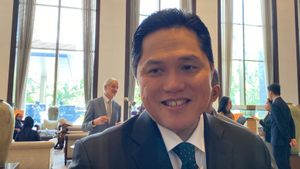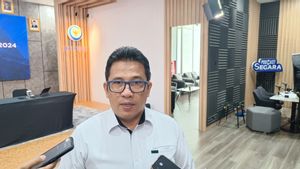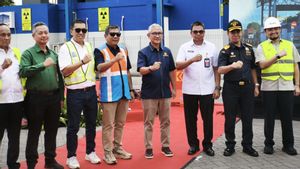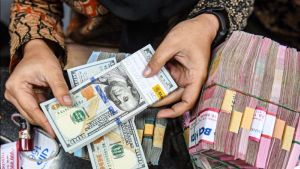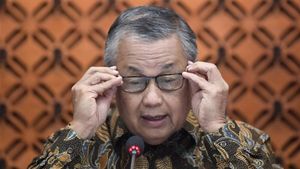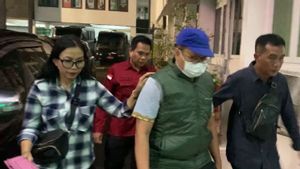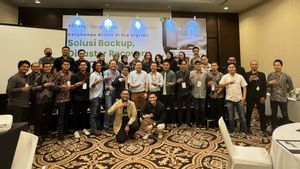JAKARTA - Minister of National Development Planning/Head of the Development Planning Agency (PPN/Bappenas) Suharso Monoarfa hopes that the 2025 Government Work Plan (RKP) development targets will be used as a reference in the preparation of work plan documents and the ministry/institutional budget as well as the Regional Government Work Plan (RKPD).
"The target and priority for the construction of the RKP in 2025 is expected to be used as a reference in the preparation of work plan documents and the ministry/institutional budget and the regional government's work plan (RKPD)," he said at the 2024 Central Development Coordination Meeting (Rakorangpus) virtually in Jakarta, Thursday.
The preparation of the RKP in 2025 is considered very strategic because it was carried out during the transitional leadership period to continue the relay of the nation's progress. In that sense, the initial draft RKP 2025 will be adjusted to the vision, mission, and program of the elected president in the 2024 general election, which will then be outlined in the Presidential Regulation (PP) of the RKP of 2025.
That way, the RKP can be the basis for the preparation of the state budget plan for the 2025 fiscal year.
In addition, the 2025 RKP is also prepared based on a technocratic approach that describes the final draft of the National Long-Term Development Plan (RPJPN) for 2025-2045.
The second message conveyed by the Head of Bappenas is the necessity of central and regional coordination to achieve national development targets with a thematic, holistic, integrative, and spatial (THIS) approach.
Finally, implementation control is needed to ensure the realization of the implementation of national development targets.
"In this case, Bappenas will also have to orchestrate the entire development agenda in the perspective of governance, risk, and compliance (GRC), so that, for the first time, the RKP will be measured in terms of, for example, how big it is, or, like what, the risk appetite (type and level of risk) that we will determine for each of these agendas," said Suharso.
On the same occasion, the Secretary of the Ministry of National Development Planning/President Secretary of Bappenas Teni Widuriyanti said that the Rakorangpus aims to synergize development programs in order to produce RKP as mandated by Government Regulation (PP) Number 17 of 2017.
For the 2024 Rakorangpus, he continued, the initial draft for the 2025 RKP will be submitted which contains the theme, target, policy direction, development priority, macroeconomic design, and budget management policies for all ministries/agencies and local governments.
"Through this activity, we hope that the annual development plan outlined in the 2025 RKP can be a reference for all ministries/agencies and local governments," said Teni.
The initial draft RKP for the 2025 fiscal year sets five development agendas. Starting from social transformation, economic transformation, transformation of governance, rule of law, stability, and leadership of Indonesia, as well as social, cultural and economic resilience.
The theme and agenda for the construction of the RKP in 2025 is said to be the framework for efforts to achieve targets and development indicator targets in 2025. This includes 5.3-5.8 percent economic growth, 7-8 percent poverty, 4.5-5 percent open unemployment rate, 0.379-0.382 Gini ratio, 0.56 human capital index, 38.6 percent decrease in greenhouse gas emissions intensity, 113-115 farmer exchange rate indicators, and 104-100 fishermen exchange rate.
Regarding the growth target and economic contribution to each region, covering Sumatra with economic growth targeted at 4.8-5.1 percent and a contribution to the national economy of 21.8 percent, Java Island grew 5-5.4 percent with a contribution of 56.8 percent, Kalimantan Island grew 5.9-6.1 percent with a contribution of 8.6 percent, then Sulawesi Island 7.3-7.9 percent with a contribution to the national economy 7.4 percent.
SEE ALSO:
In addition, the Bali Islands and Nusa Tenggara are also targeted for economic growth of 5.4-6.4 percent with a contribution of 2.8 percent, Maluku Island grew 11.1-11.9 percent with a contribution of 0.8 percent, and Papuan regions which grew 5.3-5.9 percent with a contribution of 1.9 percent.
The composition of the need for an indication of funding from ministry/institutional spending for each development agenda is social transformation of IDR 266.7 trillion, economic transformation of IDR 74.2 trillion, governance transformation of IDR 1.7 trillion, rule of law, stability, and national resilience of IDR 282.2 trillion, and socio-cultural and ecological resilience of IDR 101.9 trillion.
Apart from coming from ministry/institutional spending, other funding sources also include private investment through State-Owned Enterprises (BUMN), Government and Business Entity Cooperation (KPBU), as well as transfer funds to the regions.
The English, Chinese, Japanese, Arabic, and French versions are automatically generated by the AI. So there may still be inaccuracies in translating, please always see Indonesian as our main language. (system supported by DigitalSiber.id)



